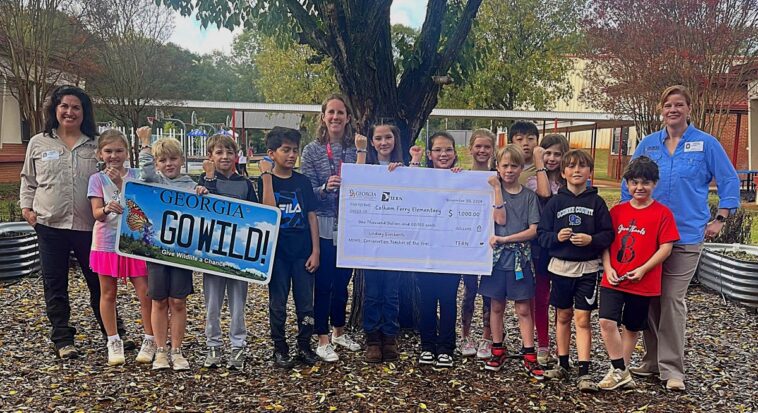If you’re interested in wildlife education or wildlife viewing, DNR’s Wildlife Conservation Section has grants that may interest you. They involve two areas. Here are details on both:
DNR Conservation Teacher of the Year
The agency is again offering a $1,000 grant to a Georgia kindergarten through fifth-grade public or private school teacher in the state who demonstrates exceptional energy and innovation in teaching life sciences. (Science specialists covering those grade levels can also apply.) The grant recipient will be recognized as the DNR Conservation Teacher of the Year.
Teachers who apply must use Georgia’s native animals, plants and habitats as the context for covering Georgia Standards of Excellence. Although the grant emphasizes life science, cross-curricular teaching is highly encouraged. Preference will be given to teachers who demonstrate creativity in project design and take learning outside, as well as for projects that could not be funded otherwise. Teaching can take place in-person on school grounds or online.
“The outdoors is an ever-changing, real-world learning lab for a variety of subjects,” DNR outreach coordinator Linda May said. “Students are more engaged and focused as they observe and experience nature firsthand. The result is improved academic performance and well-being.”
The Conservation Teacher of the Year grant is coordinated by the Wildlife Conservation Section, part of DNR’s Wildlife Resources Division. The deadline to apply is Nov. 3, 2025. DNR will notify the grant winner by Nov. 17.
For more information, visit georgiawildlife.com/TeachingConservationGrant or contact Linda May (linda.may@dnr.ga.gov, 706-319-0211) or Anna Yellin (anna.yellin@dnr.ga.gov, 678-459-8393).
Interpretive signs installed at Henry County’s Cubihatcha Outdoor Education Center via a Wildlife Viewing Grant (Cubihatcha)
DNR Wildlife Viewing Grants
Via the Wildlife Viewing Grants Program, Wildlife Conservation also offers a helping hand to projects that help people experience the state’s native wildlife and natural habitats. Grant proposals for 2026 are being accepted at georgiawildlife.com/WildlifeViewingGrants.
The grants are provided through Georgia’s Nongame Wildlife Conservation Fund, which Wildlife Conservation manages. The goal: Provide viewing opportunities that raise awareness of native animals not fished for or hunted, rare native plants and natural habitats – particularly those considered conservation priorities in the Wildlife Action Plan.
The deadline to apply is Feb. 4, 2026. Awards, which are provided as a reimbursement for approved expenses, range up to $5,000 per project.
Since reviving the program in 2018, the DNR Wildlife Conservation Section has selected over 45 proposals for grants totaling more than $120,000. The projects, explored in an interactive map at georgiawildlife.com/WildlifeViewingGrants, vary from viewing platforms to interpretive signs and outreach programs. All provide ways to see and learn about wildlife, especially species and habitats listed in Georgia’s State Wildlife Action Plan.
Wildlife Conservation Chief Matt Elliott explained that the program complements the plan, a comprehensive strategy to conserve native wildlife before they become rarer and more costly to save or restore.
“Wildlife viewing is a rapidly growing recreational activity, and Georgia is one of the best places to do it,” Elliott said. “We appreciate the chance to help provide folks more and different ways to experience our state’s biodiversity.”

Boardwalk refurbished with a Wildlife Viewing Grant at ABAC’s Nature Study Area Boardwalk (ABAC)
File grant proposals at georgiawildlife.com/WildlifeViewingGrants. The site has complete instructions.



GIPHY App Key not set. Please check settings